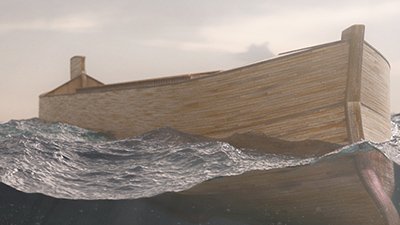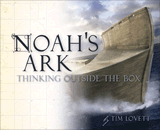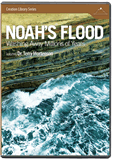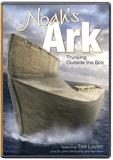A Streamlined Noah’s Ark?
Dear Editor
I worked with ships for 22 years before I retired in 1984, so I know a little about them. I am familiar with ship stores, ships cargoes, and the general layout of the ship etc. The Bow on the ship is designed to cut the water, and the stern is where the rudder is situated, (a piece of apparatus for guiding the ships direction.) The Ark in this month’s issue of Answers is clearly designed for sailing, but the Bible Ark was designed to float. The Bible ark had no need of a streamlined underwater fixed rudder for directional control. (There was no direction, ever thing was underwater) There-fore the elaborate bow and stern on the new Ark no doubt are designed to direct the ark into the wind keeping it from rolling over. But the designer of the new Ark seems to forgets that God was the designer of the Bible Ark, and that the Bible Ark was incapable of overturning in high winds no matter what shape it was, was not the Ark under divine protection? I believe that this new design of the Ark could be the thin end of the wedge and only serves to confuse. I am surprised that Answers in Genesis gave so much space to it in its magazine, do I take it that Answers in Genesis will now adopt this designed over the standard rectangle Ark that they have used so successfully in the past?
The author on page 28 contends that a ship like structure rather than a boxlike rectangular shape would be safer, I however contend that the Ark was built with the largest capacity in mind, in which case the rectangular shape fits the bill perfectly. God is the master of the wind and waves, therefore, the passengers in the Ark where safe from all harm in their rectangular safe haven.
As for the carrying of fresh water, I have seen double-segmented hull ships in my day that transported water and rapeseed oil in their double hulls. Would it be in order to suggest that the Ark too had a double hull to store the run off rain water from the roof of the Ark, perhaps with outlets on each deck for watering the animals?
Mr Lovett is entitled to his theory but why give so much space in your magazine to it.
A.L., Scotland
Thank you for your input; I think it is good to explore ideas about the possible design of Noah’s Ark given in Scripture.
I must agree that the rectangular Ark has served “successfully in the past.” As I stated in the article, this was the ideal way to highlight the true scale of Noah’s Ark, unlike the distorted images often seen in Sunday school.
You say the new design “only serves to confuse.” Well, at least it helps to clarify that the exact shape of the Ark is not given in the Bible. A rectangular Ark is not the only valid solution, which has been our message until now.
While it is quite reasonable to argue for various designs of Noah’s Ark, ship design is a balance of many factors. It is not enough to focus on carrying capacity at the expense of other factors like hull strength, seakeeping, and comfort. In fact, if capacity were the only factor that mattered, why was the Ark so long and narrow? Even the Gilgamesh Ark (a bizarre cube) would fit this bill. It would have been easier to achieve the same capacity with a shorter, fatter hull (as the article states). The long proportions seem to hint at a motive for a more comfortable ride in heavy seas.
Although my design may have some similarities to a vessel built to “sail,” this is not the purpose, of course. As the article states (and you restate), the fixed rudder (or skeg) helps to prevent lateral (sideways) motion of the stern, which, in combination with the exaggerated sideways motion of the bow, helps the Ark escape from a beam sea.
The proportions are so obviously ship-like that it makes sense that it should look and act like a ship.
God could easily steer the Ark—or even compensate for poor workmanship, inadequate structural strength, or an unseaworthy design. However, the proportions are so obviously ship-like that it makes sense that it should look and act like a ship, too.
We could believe that God steered the Ark, or we could believe that God steered Noah’s mind. I would first vote for the latter, since throughout the Bible, God demonstrates His preference to use people to accomplish His will as much as possible, and then He will do the rest. It is worth pushing the point that an “elaborate bow” would not stump this 500-year-old righteous man with extremely good health.
Why devote so much space to this direction-keeping design? Perhaps it could be viewed this way—since a box-like Noah’s Ark is not the only solution, we are bringing a balancing idea. At the same time, I think it helps to make sense of those long proportions while reiterating that Noah was not a primitive cattle breeder.
Tim Lovett
Recommended Resources

Answers in Genesis is an apologetics ministry, dedicated to helping Christians defend their faith and proclaim the good news of Jesus Christ.
- Customer Service 800.778.3390
- © 2024 Answers in Genesis






